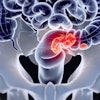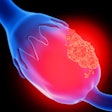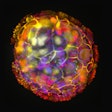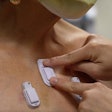Dear LabPulse.com member,
Glucose testing was the central theme of two feature articles this past week.
On Monday, we reported that glucose testing markets are expected to reach nearly $20.4 billion in 2022.
With a compound annual growth rate (CAGR) anticipated at 5.9%, the market is expected to reach $27.1 billion by 2027, according to the latest issue of the In Vitro Diagnostics Business Outlook, published by Kalorama Information.
Recognizing the business potential in glucose testing, Seattle-based Know Labs went public on the New York Stock Exchange (NYSE) on Friday. After the close of trading the previous day, the developer of a biosensor to detect and monitor glucose and numerous medical signatures announced the pricing of an underwritten public offering of 3.6 million shares at $2.00 per share.
New IVD tests and systems
Siemens Healthineers last week launched two combination tests for SARS-CoV-2 and other seasonal respiratory pathogens. The CE-marked FTD SARS-CoV-2/FluA/FluB/HRSV PCR assay is available to laboratories, while the Clinitest Rapid COVID-19 + Influenza Antigen Test is used at the point of care.
Qiagen announced new additions to its NeuMoDx assay menu for organ transplant-associated viruses. In 2018, Qiagen paid $234 million to purchase a 19.9% stake in NeuMoDx, along with the right to acquire the remaining stake. Then in September 2020, it acquired the remaining 80.1% for $248 million in cash.
The new assays permit the identification and quantification of the Epstein-Barr virus (EBV) and human herpesvirus 6 (HHV-6).
Roche Diagnostics announced that it has received 510(k) clearance from the U.S. Food and Drug Administration (FDA) for its compact, modular testing system, Cobas pure integrated solutions. A member of the Cobas family of serum-work-area solutions, the system combines clinical chemistry, immunoassay, and ion-selective electrode diagnostic testing onto a single platform to optimize space and resources for low- to mid-volume labs. It automates manual tasks, improves productivity, and supports fast delivery of patient results, Roche said.
Noteworthy studies
As new variants of the SARS-CoV-2 virus continue to emerge, concerns have been raised about the performance of rapid antigen tests. People have wondered whether the rapid tests, with lower sensitivity than RT-PCR tests in detection SARS-CoV-2, would reliably detect its variants.
There is now growing evidence that rapid antigen tests remain accurate for detecting variants of SARS-CoV-2. This past week, we reported on a recent study published in Cell showing that commercially available rapid antigen tests can detect past and present variants of concern.
Further related to the pandemic, we reported that reading blood-oxygen saturation levels on a smartphone could give more people important information to help them interpret symptoms of COVID-19 and other medical conditions at home.
According to a proof-of-principle study published this week in npj Digital Medicine, University of Washington and University of California San Diego researchers demonstrated that the use of a smartphone camera and flash could enable detection of blood oxygen saturation levels comparable to those measured in a clinic using a pulse oximeter clipped to a finger.
In a study published in Science Advances, Stanford University engineers described the development of a wearable device that could measure tumor regression accurately and noninvasively following drug therapy initiation. The device may provide an inexpensive and hands-free way to evaluate the efficacy of cancer drugs and could lead to promising new directions in cancer treatment, its developers said.
With an eye on the importance of studies to the IVD industry, Arizona State University on Monday said it has launched Evidence Commons, a comprehensive repository of published COVID-19 research focused on diagnostic tests and testing practices. With more than 3,000 published papers, Evidence Commons provides access to the diagnostic-related research to enhance scientific collaboration and pandemic mitigation and prevention, ASU said.
Best wishes,



















